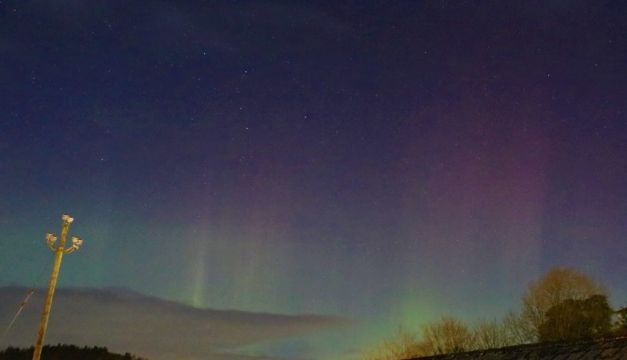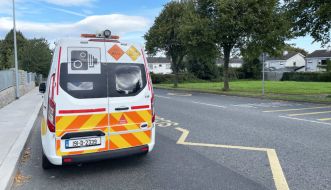You don’t have to travel to Iceland or Alaska to see one of the most stunning natural displays in the world – the Northern Lights set the night sky aglow in many locations across Ireland.
Although clouds can often obscure the breathtaking green, and sometimes pink, blue and purple aurora borealis, on a clear night when there’s been the necessary solar activity to create the lights, they can be seen from the north coast and parts of the Antrim coast, to Co Mayo on the west coast, Ashbourne in Co Meath, and – if it’s a strong, vivid display – the Dublin area.
And while there’s never any guarantee you’ll see the spectacular natural light show, the coming equinox – on September 23rd – could give you a better chance than normal of witnessing it, because of conditions in the Earth’s magnetic field and the tilt of the planet at that time, explains David Moore, editor of Astronomy Ireland magazine.
View this post on Instagram
Advertisement
“If the sun’s very quiet that day, then we’re not going to get the aurora, but even if there’s a modest explosion on the sun during the equinox, it can lead to a display of the aurora,” he says. “The equinox increases the chances, rather than guarantees you seeing it.”
As for where in Ireland you’ll see the lights, the rural north coast is one of the best locations – although it altogether depends on the strength of the aurora, whether there are clear skies, and if there’s no light pollution from cities and towns.
“People who live on the north coast of Ireland have a great view, because they’re looking out over the Atlantic Ocean and there’s no town lights in the distance from there,” says Moore.
“Mayo’s a good place as well, because again, it’s looking out over the Atlantic Ocean. But you can see it from anywhere in the country if you have clear skies.”
🔴AURORA ALERT - STRONG AURORA IN PROGRESS
View the latest here 👉https://t.co/RDKdlaMr10#aurora #ireland #northernlights #WildAtlanticWay #astronomy #astro pic.twitter.com/dzk3jpAUnnAdvertisement— Aurora Alerts Ireland (@auroraalertsIRE) September 18, 2023
The aurora process begins after solar flares – eruptions on the sun – blast billions of tons of radiation out into space, explains Moore. These atomic particles hit the Earth’s atmosphere about two days after they’ve blasted off the sun, and some are caught in the Earth’s magnetic field, and drawn towards the North and South poles. There, they slam into the atoms and molecules that make up various gases in the atmosphere, creating the northern lights’ characteristic vibrant colours as they collide.
“The particles normally create a lovely oval round the North Pole, and when they’re very intense, that ring gets bigger and can come as far south as Ireland, or just off the north coast of Ireland,” says Moore. “If it gets really active it comes right the way over Ireland, and goes further south from us on very rare occasions, but you need a really major explosion on the sun for that to happen.”
He explains that people who want to see the aurora should make sure they’re away from man-made lights, stressing: “If you live in a town or a city, you’ll only see the major displays.
“I’ve seen fantastic aurora from Dublin city, where the sky was ablaze with northern lights, but you’ll only see the major shows from a bright location. So if you live in the countryside and there are no towns or bright lights in the distance to the north of you, you can get a great view from Ireland.
A time-lapse of last night's Aurora display from Rosses point, Sligo, Ireland.#aurora #ireland #northernlights #sligo #auroraborealis pic.twitter.com/WXcPYFEIEo
— Aurora Alerts Ireland (@auroraalertsIRE) September 13, 2023
“If you’re on the north side of Dublin though, looking out from County Dublin towards County Meath, you can get great views – I’ve taken camera crews out to places near Ashbourne and had amazing views of the aurora, as good as anything you’ll see in National Geographic.”
Because spacecraft are watching the sun, astronomers can predict if solar explosions are going to happen and when the particles are expected to reach the Earth’s atmosphere. Moore says Astronomy Ireland runs an aurora alert service for Ireland – posting every afternoon what’s going to happen in the sky that night, including the aurora.
He says the aurora can be seen at any time of the night, sometimes all night, sometimes for just an hour or two, and adds: “The sun goes through cycles of activity ever 11 years, and it’s due to peak in 2025, so the next few years are actually very good for seeing the northern lights.
“The particles from the sun hit the atmosphere well above the clouds, so if it’s cloudy all you’ll see is clouds – and from Ireland, that’s a serious problem. There can be fantastic reports of the lights all around the world, and all we have is cloud and rain. But we do get clear skies sometimes!”







